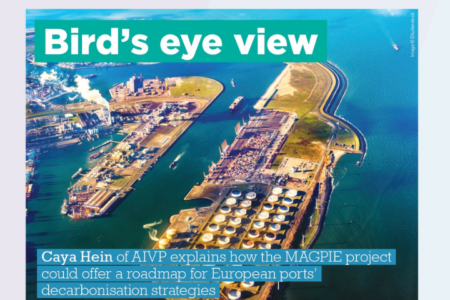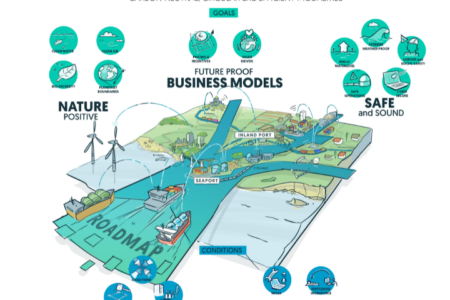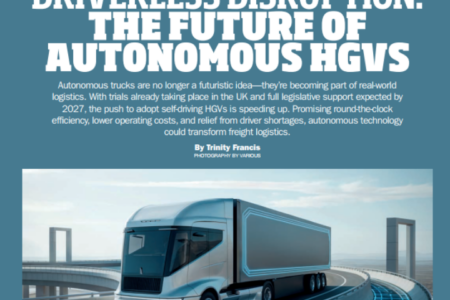Green Inland Ports (GRIP) is a 3-year study commissioned by the European Commission focussing on the sustainable development of inland ports. The study is going to result in solutions for the implementation and wide-scale roll-out of sustainability tools for TEN-T inland ports, embracing the key role that inland ports have in the realisation of the objectives of the European Green Deal to reduce transport emissions with 90% by 2050. It is also supporting the European Commission with advice for the future policy agenda to support European inland ports in their crucial role to enable the green transition as zero-emission and multimodal hubs. The study assesses the environmental impact of ports on their surroundings, looks at the role of digitalisation in becoming more sustainable and identifies opportunities to adopt inland waterway transport for urban mobility and short-distance transport. These results feed into the development of Environmental and Sustainable Management Systems which will be tested and implemented with ambitious ports in 2025.
During the MAGPIE Port-City workshop that took place on the 17th and 18th of September, representatives of GRIP attended the MAGPIE workshop and hosted their own workshop, which was attended by various MAGPIE consortium members. In this interview, Jasper Tanis from Ecorys provides his insights into the MAGPIE project and how it can contribute to European greening ambitions, especially those of inland ports.
Q1. What were your main takeaways from the MAGPIE Port-City workshop? Did you find it a useful platform to bring stakeholders together to discuss?
The MAGPIE Port-City workshop has given our team the opportunity to have an exchange with stakeholders about the demonstrations developed and tested by MAGPIE consortium members. For instance, I learned more about the LOG4NRW concept aiming to optimise hinterland cargo flow. The debate about what is needed to make such synchromodal solutions economically competitive gave me new insights which we can incorporate into the GRIP study.
We appreciated the exchange with MAGPIE consortium members and visitors during the GRIP workshop, especially with regards to our tool to establish a quantified environmental benchmark for inland ports and our approach to Environmental and Sustainable Management Systems. We welcome all follow-up and invite all readers to reach out with us and provide us with your feedback and opinion to these two important tasks of the GRIP study.
Q2. Could you please elaborate on how you believe the MAGPIE project could be of use in greening and digitalizing European inland ports, especially in line with the GRIP project?
We eagerly need a coordinated approach for the uptake of renewable fuels, zero-emission technologies, and sustainable transport solutions. I am convinced that closer collaboration between innovation projects testing real-life demonstrations, such as MAGPIE, and policy-oriented studies, such as GRIP, is needed to ensure that European policies support the roll-out of promising sustainable and environmentally friendly solutions. Therefore, I hope that the collaboration we established between the two projects during the MAGPIE Port-City Workshop will continue at other occasions in 2025.
Q3. Do you think the MAGPIE project is on the right track to help ports address the ambitions set forth in the Green Deal? What would you like to see as the outcomes of the projects?
European inland ports, as enablers of the green transition, have a key role and important responsibility to support the cleanest forms of transportation, making a contribution to the realisation of the European Green Deal objectives. Projects such as MAGPIE and GRIP should support ambitious and frontrunner ports with coherent guidelines that help these ports to achieve their environmental objectives. Cooperation is needed to ensure sufficient alignment between the guidelines developed by our projects.


